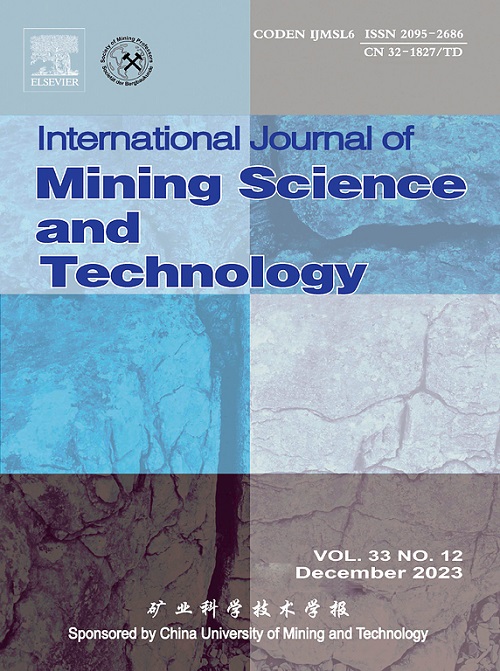Real-time monitoring and analysis of hydraulic fracturing in surface well using microseismic technology: Case insights and methodological advances
IF 11.7
1区 工程技术
Q1 MINING & MINERAL PROCESSING
International Journal of Mining Science and Technology
Pub Date : 2025-04-01
DOI:10.1016/j.ijmst.2025.02.009
引用次数: 0
Abstract
Through a case analysis, this study examines the spatiotemporal evolution of microseismic (MS) events, energy characteristics, volumetric features, and fracture network development in surface well hydraulic fracturing. A total of 349 MS events were analyzed across different fracturing sections, revealing significant heterogeneity in fracture propagation. Energy scanning results showed that cumulative energy values ranged from 240 to 1060 J across the sections, indicating notable differences. Stimulated reservoir volume (SRV) analysis demonstrated well-developed fracture networks in certain sections, with a total SRV exceeding 1540000 m3. The hydraulic fracture network analysis revealed that during the mid-fracturing stage, the density and spatial extent of MS events significantly increased, indicating rapid fracture propagation and the formation of complex networks. In the later stage, the number of secondary fractures near fracture edges decreased, and the fracture network stabilized. By comparing the branching index, fracture length, width, height, and SRV values across different fracturing sections, Sections No. 1 and No. 8 showed the best performance, with high MS event densities, extensive fracture networks, and significant energy release. However, Sections No. 4 and No. 5 exhibited sparse MS activity and poor fracture connectivity, indicating suboptimal stimulation effectiveness.
使用微地震技术实时监测和分析地面井的水力压裂:案例洞察和方法进步
通过实例分析,研究了地面井水力压裂中微地震事件的时空演化、能量特征、体积特征和裂缝网络发育。在不同的压裂段中,共分析了349个MS事件,揭示了裂缝扩展的显著异质性。能量扫描结果显示,各剖面的累积能量值在240 ~ 1060 J之间,差异显著。增产储层体积(SRV)分析表明,在某些路段裂缝网络发育良好,总SRV超过1540000 m3。水力裂缝网络分析表明,在压裂中期,MS事件的密度和空间范围显著增加,表明裂缝扩展迅速,形成了复杂的网络。后期,裂缝边缘附近的次生裂缝数量减少,裂缝网络趋于稳定。对比不同压裂段的分支指数、裂缝长度、宽度、高度和SRV值,1号段和8号段表现最佳,质谱事件密度高,裂缝网络广泛,能量释放显著。然而,第4段和第5段MS活动稀疏,裂缝连通性差,表明增产效果不理想。
本文章由计算机程序翻译,如有差异,请以英文原文为准。
求助全文
约1分钟内获得全文
求助全文
来源期刊

International Journal of Mining Science and Technology
Earth and Planetary Sciences-Geotechnical Engineering and Engineering Geology
CiteScore
19.10
自引率
11.90%
发文量
2541
审稿时长
44 days
期刊介绍:
The International Journal of Mining Science and Technology, founded in 1990 as the Journal of China University of Mining and Technology, is a monthly English-language journal. It publishes original research papers and high-quality reviews that explore the latest advancements in theories, methodologies, and applications within the realm of mining sciences and technologies. The journal serves as an international exchange forum for readers and authors worldwide involved in mining sciences and technologies. All papers undergo a peer-review process and meticulous editing by specialists and authorities, with the entire submission-to-publication process conducted electronically.
 求助内容:
求助内容: 应助结果提醒方式:
应助结果提醒方式:


